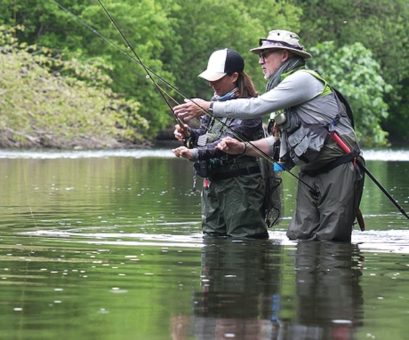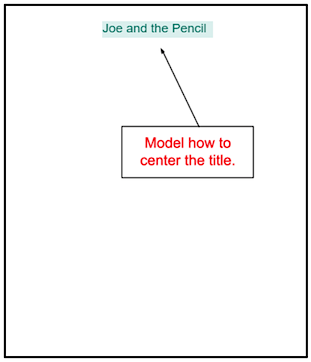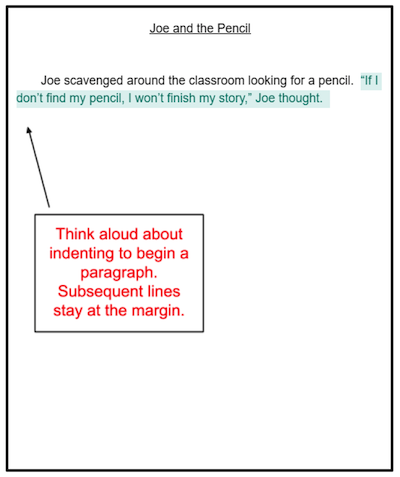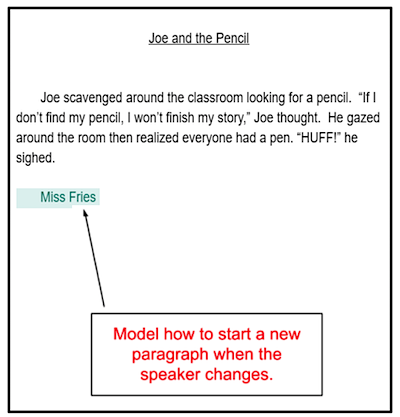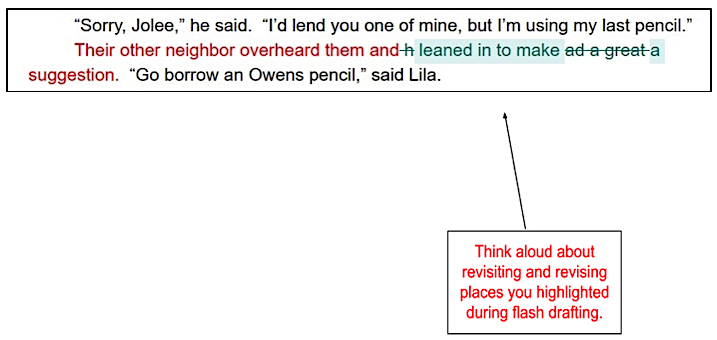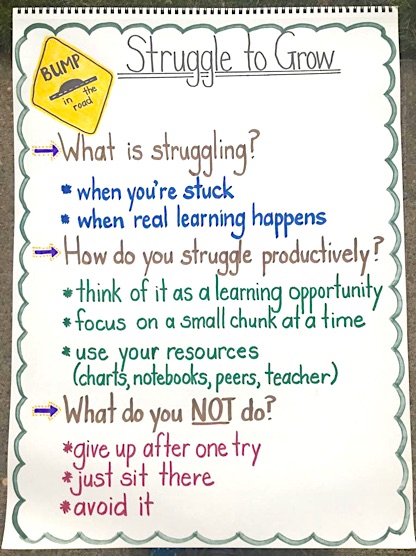‘Draft Alongs’ Help Kids Grow Olympic Mindsets
Using the “Draft Along” strategy helps guide writers through productive struggles.
Even Olympians grapple for gold. In recent weeks, as we watched talented young athletes defy gravity and endlessly hit bullseyes, it was easy to think “I could do that.”
But dare to try and you’ll soon gain a new appreciation for the Games’ highest achievers. They’ve trained relentlessly to become elite contenders, and struggled on their journeys to get there. Imagine if they gave up after complaining, “It’s too hard!”
Cue dramatic music and video montages revealing athletes’ backstories. We’re glued to screens rooting for Olympians because the stories of their persistence through struggles resonates with us.
Have You Struggled to Learn a New Skill?
Think about the first time you tried something new. Did you get the hang of it right away? Or did it take repeated tries and patience to reach your goal?
During a recent fly fishing lesson, I cast my line like I thought my instructor had modeled, before realizing I faced more challenges than my prospective river catch.
The pro’s gritted teeth and restrained reach for my reel showed he was frustrated too. But both he and I persevered through my struggles with wrist control. He scaffolded without excessive help, and it paid off. I proudly hooked a brown bass on my own!
Help Students with Productive Struggles
As parents and educators, we want to balance the need to challenge learners without frustrating them with unreasonable expectations.
In her ASCD article “Productive Struggle Is a Learner’s Sweet Spot,” Barbara Blackburn describes the productive struggle’s ideal zone in between scaffolding and support. “Rather than immediately helping students at the first sign of trouble, we should allow them to work through struggles independently before we offer assistance.”
Since it’s important to set students up for success, we must distinguish between productive struggles and developmentally inappropriate expectations. Part of students being actively engaged in their own learning is stumbling upon messy problems that require creative thinking and troubleshooting.
According to mathematician Jo Boaler, the Nomellini-Olivier Professor of Education at Stanford, “Neuroscientists have found that mistakes are helpful for brain growth and connectivity and if we are not struggling, we are not learning.”
‘Draft Alongs’ Show the Messy Progress
A new year brings lots of overzealous students eager to take on the world – until faced with their first challenging assignment. “It’s too hardddddddd!” some will wail. Doubt may set in and students may shut down.
From the get-go, we want to help them develop a mindset that embraces struggles with a willingness to explore intriguing, unknown territory. For example, I model the process of battling writer’s block in a Draft Along. It’s an activity that lets students see a writer bumble and stumble through a writing piece.
My amazing co-planner Karen Raia and I changed how we incorporated writing models in our mini-lessons. We observed students had difficulty deconstructing authors’ polished, finished pieces to see what good writing looks like. When it came time for students to draft, they didn’t know where to start.
We realized that presenting them with the neat published pieces didn’t show the struggles writers had to go through. It was like showing them an elite Olympian’s performance and asking them to replicate it. They needed us to make the writing process visible in real time before their very eyes. The idea of an interactive Draft Along was born!
Think About a Think Aloud
A Draft Along is similar to the idea of a Think Aloud, where students hear the teacher’s verbalized thinking that occurs during the writing process. Don’t assume students know how the finished writing gets on the page. Show them!
- Begin by showing a blank page using low tech chart paper or a high tech document. Model how to navigate to the top center to add a title.
- Think aloud about spacing decisions like the left side of the page, margins, indenting, etc.
- Continue writing and thinking aloud your drafting decisions. I usually have an outline of what I want to include, but as I scaffold the lesson and allow for more student input, my writing tends to go off-script. This is what you want! It’s when beads of sweat appear on your forehead and real struggles begin — brainstorming strong word choices, eliminating overused words, switching paragraph orders, etc.
- Pause and think aloud when you hit roadblocks. Students observe you persevering through writer’s block and see how you persist through these struggles. For example, to keep my writing momentum, I may insert a simple word while drafting, then highlight it in another color to remind me to replace it with a stronger synonym later. Let students see the mess!
- Reflect aloud about how your writing grew from the original blank page. Review — and celebrate — revisions, edits, and struggles you overcame as a writer. Create a class anchor chart students can reference when ownership of the skills shifts to them.
Seeing Struggles as Opportunities
Productive struggle is a part of learning and growing. It takes persistence to achieve goals. As students get more comfortable with struggling productively, you’ll also grow the ways you monitor and assess the appropriate levels of support you can offer.
It’s a fine balance of maintaining challenge and rigor and providing assistance to help students build lifelong skills and confidence … and enjoy the pursuit of learning while they’re in your classes!
References:
Blackburn, B. (2018, December 13). ”Productive Struggle Is a Learner’s Sweet Spot.” Educational Leadership, ascd.org.
Boaler, J. (2019, October 28). ”Why Struggle Is Essential for the Brain — and Our Lives.” EdSurge.com.
Kelly Owens is a reading interventionist who helps sixth grade readers and writers overcome past literacy struggles by building stamina, confidence, and a greater love of learning. A teacher with 28 years’ experience, she has represented Hillsborough Township Public Schools as a NJ Governor’s Teacher of the Year. She also co-created Buddies for the Buddies, which was featured on Emmy Award-winning Classroom Close-up NJ.
Kelly earned her Ed.M. from Rutgers University. Additional writing credits include published work with The King School Series (Townsend Press), The Mailbox magazine, and MiddleWeb.


